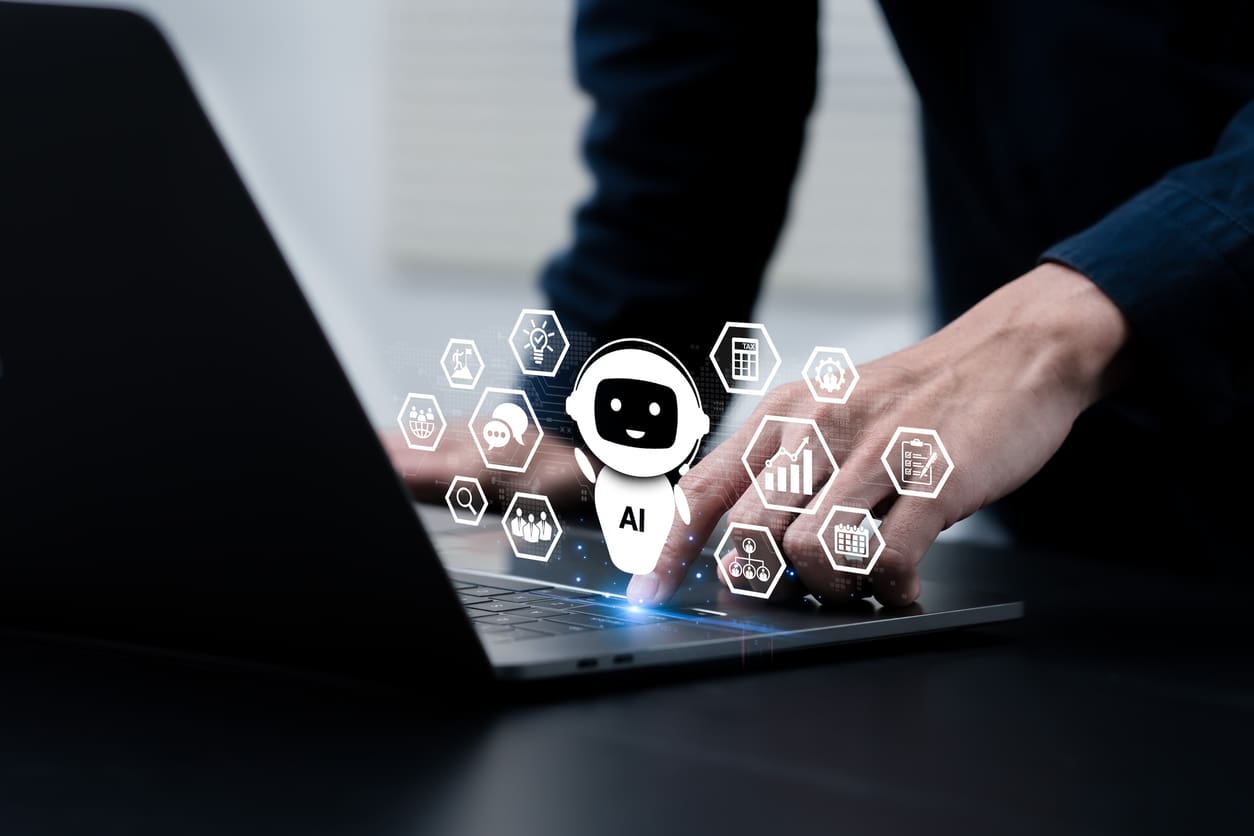Autonomous artificial intelligence agents are no longer science fiction. These software entities, capable of perceiving their environment, making decisions, and acting without constant human supervision, are rapidly integrating into business operations. Customer support, finance, cybersecurity, internal operations… their impact is already measurable.
But as these systems gain autonomy, a pressing question emerges: Who governs these agents? And more importantly, who is responsible for their decisions ?
What is an autonomous AI agent?
An AI agent is an AI system capable of observing an environment, making decisions, and acting autonomously to achieve a goal. Unlike basic assistants or generative models (like chatbots or copilots), which only respond to human input, the AI agent can initiate actions on its own, orchestrate complex tasks across multiple systems, and adapt to changing situations.
It belongs to a new generation of “proactive” or “autonomous” AI systems that combine multiple components: LLMs, business rules, memory, API and MCP connectors, and action capabilities (read/write in environments). These systems are aligned with agent-based architectures, which aim to replicate complex cognitive behaviors, such as planning, reasoning, learning, and prioritizing, in dynamic environments.
Powerful AI agents…but invisibles
What sets AI agents apart from traditional systems is their ability to take initiative. They prioritize, plan, adapt to context, and pursue predefined goals. Yet their functioning often remains opaque, both to users and decision-makers.
This operational invisibility makes governance more difficult… and more critical.
Governing AI agents: A strategic lever
Adopting AI agents is not just about deploying them : it’s about regulating them.
This requires:
- Flexible frameworks to accommodate frequent updates and non-deterministic behaviors;
- Audit mechanisms to trace decisions and detect potential drifts;
- Ethical guidelines integrated into the agents’ code itself;
- Proactive compliance with current regulations, such as the EU AI Act or ISO and European standards regulating AI deployment.
Governance thus becomes a key factor in resilience and competitiveness. It helps prevent legal, reputational, and operational risks, and builds trust with employees, customers, and regulators.
Responsibility of AI agents: a gray area to clarify
Who is responsible when an AI agent makes a bad decision?
- The agent provider?
- The technical team that configured it?
- The company using it?
- The agent itself, as a « technical subject »?
To date, responsibility still lies with humans, but the lines are shifting. The AI Act does not explicitly address liability, but it does introduce specific obligations for « deployers » of high-risk AI systems. The debate around shared responsibility, between designers, operators, and users, is just beginning.
To Govern = To Design, Monitor, and Adapt
Responsibility is not just a legal issue, it’s also operational. To ensure their agents are compliant, a company must:
- Map out all active AI agents in its systems (who does what, where, with what rights and objectives?);
- Define clear supervisory roles (who monitors what, how often?);
- Establish review and removal protocols for agents in case of malfunction or risk;
- Involve stakeholders (compliance, IT, legal, ethics, business units…) from the design phase;
- Train the teams responsible for running and using AI.
Governance to Foster Innovation
Organizations that invest today in responsible governance of their AI agents gain a long-term competitive edge. By aligning these systems with their values and strategic goals, they secure their digital transformation, while enhancing agility, ethics, and appeal.
In short: Autonomy does not eliminate the need for governance. It calls for it.
